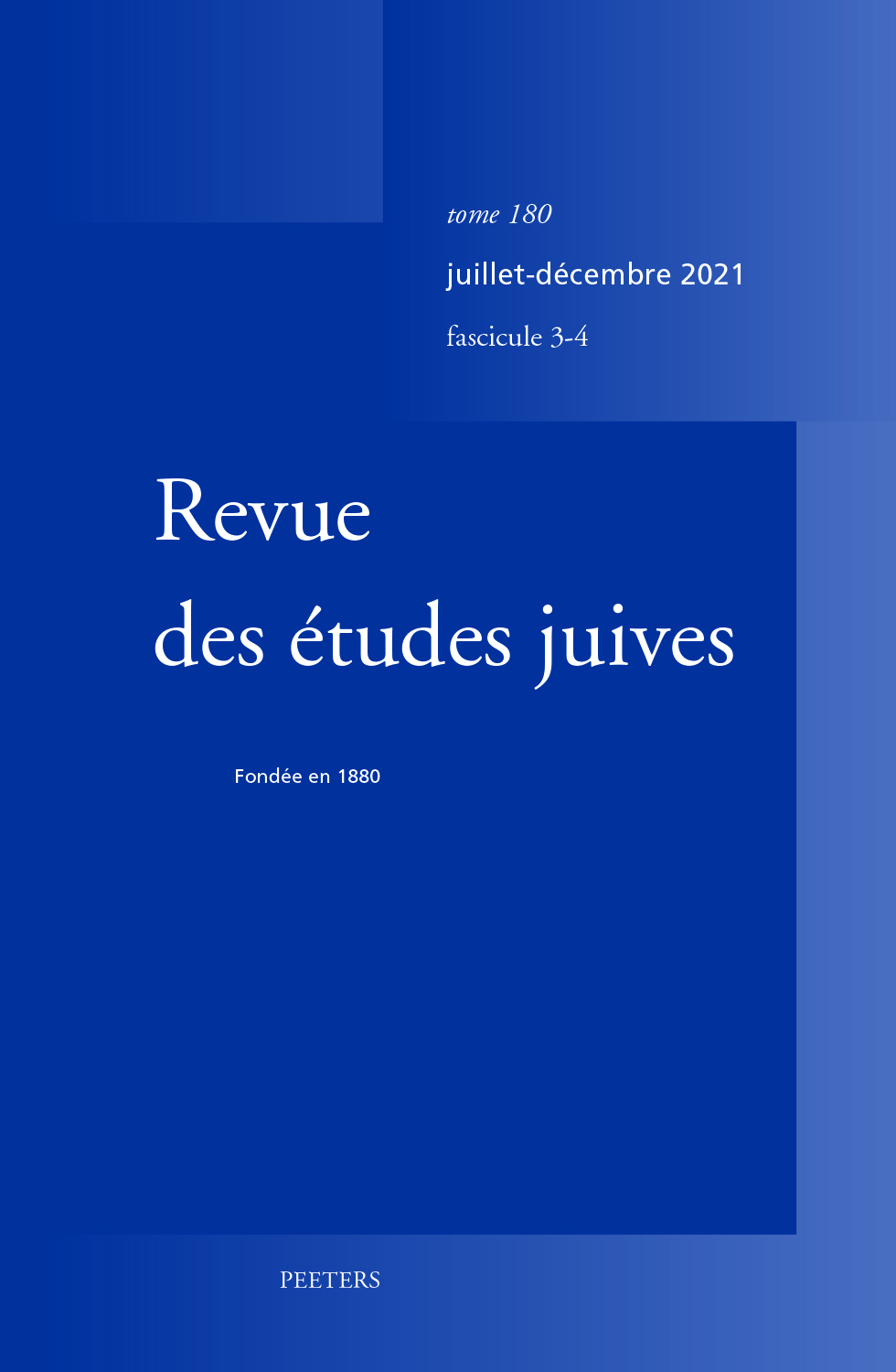 previous article in this issue previous article in this issue | next article in this issue  |

Preview first page |
Document Details : Title: Medical Terminology in the Hebrew Tradition Subtitle: Nathan Ben Eliezer ha-Me'ati, Glossary to the Hebrew Translation of Ibn Sīnā's Kitāb al-Qānūn fī al-ṭibb Author(s): BOS, Gerrit Journal: Revue des Études Juives Volume: 172 Issue: 3-4 Date: juillet-décembre 2013 Pages: 305-321 DOI: 10.2143/REJ.172.3.3005379 Abstract : Nathan Ben Eliezer ha-Me’ati was active as a translator of scientific, above all medical works from Arabic into Hebrew in the city of Rome in the last decennia of the thirteenth century. As a translator of medical works Nathan is above all known for his translations of Maimonides’ Medical Aphorisms, and of Ibn Sīnā’s Kitāb al-Qānūn. In order to be able to translate the Kitāb al-Qānūn into Hebrew — and especially the technical medical vocabulary — Nathan had to solve the same problem that was facing the Tibbonides and other translators, namely that the Hebrew language was lacking the technical medical vocabulary necessary for adequately rendering the medical Arabic terminology. For the creation of a fitting Hebrew terminology Nathan employed the same techniques as the Tibbonides and other translators, namely those of loan translation (calque), semantic borrowing, and of providing the ancient biblical and rabbinic Hebrew terms with a new sense. And for the cases that he was unable to create a new Hebrew term, he took refuge to either transcribing the Arabic term into Hebrew or to giving its equivalent in one of the Romance languages he was familiar with. And in several cases he did not replace the Hebrew term for a Romance equivalent but simply added it to the Hebrew and/or Arabic term in order to prevent a confusion. This is precisely the strategy that Nathan described into detail in his introduction to the glossary that he attached to his translation of Ibn Sīnā’s Kitāb al-Qānūn. An analysis of the terminology of the glossary of about 300 terms shows that several terms were indeed coined by him on the basis of the Bible and Rabbinic literature. Other terms were possibly coined by himself and feature as the earliest entries in Ben Yehuda’s Dictionary with explicit attestations from his translations of the Qānūn and/or Medical Aphorisms. Yet other terms were possibly coined by Nathan and do not feature in any dictionary at all. C’est dans la dernière décennie du XIIIe siècle, à Rome, que Nathan ben Éliézer ha-Me’ati a œuvré en tant que traducteur de textes scientifiques, et plus particulièrement d’ouvrages médicaux de l’arabe vers l’hébreu. Il est surtout connu pour sa traduction du Fuṣūl Mūsā de Maïmonide (Pirqei Moshe) et du Kitāb al-Qānūn d’Ibn Sīnā. Pour y parvenir et rendre le vocabulaire médical en hébreu, Nathan a dû résoudre le même problème que celui auquel ont été confrontés les Tibbonides et autres traducteurs, à savoir que la langue hébraïque ne possédait pas le vocabulaire technique adéquat permettant de rendre correctement la terminologie médicale arabe. Il a usé des mêmes stratagèmes que ses pairs et a expliqué sa démarche en détail dans l’introduction au glossaire qui accompagne la traduction du Kitāb al-Qānūn: création de calques morphologiques, emprunts sémantiques, réutilisation de termes tirés de l’hébreu biblique et rabbinique avec un sens nouveau. Dans les rares cas où il ne lui a pas été possible de créer un terme hébreu, Nathan s’est résolu à transcrire le terme arabe en hébreu ou à donner son équivalent dans l’une des langues romanes qui lui était familière. Parfois même, Nathan ben Eliezer a simplement ajouté à l’équivalent hébreu et / ou au terme original arabe une glose romane afin d’éviter toute confusion. L’analyse des quelque trois cents termes techniques du glossaire montre qu’en effet, Nathan ben Éliézer a inventé plusieurs termes en se fondant sur la Bible et la littérature rabbinique. D’autres termes probablement inventés par lui figurent parmi les premières occurrences du dictionnaire de Ben Yehuda, avec des références explicites à l’une ou l’autre de ses traductions du Fuṣūl Mūsā et du Kitāb al-Qānūn. D’autres encore, qui n’apparaissent dans aucun dictionnaire, ont probablement aussi été créés par Nathan. Dans certains cas, en l’absence d’une terminologie correspondante en hébreu, Nathan a dû se résoudre à transcrire plusieurs termes arabes et afin de réduire le risque d’une fausse interprétation d’un terme donné, il a parfois ajouté une explication en langue romane. |
|


